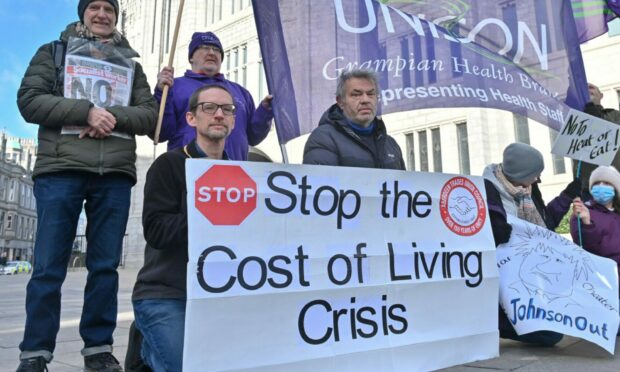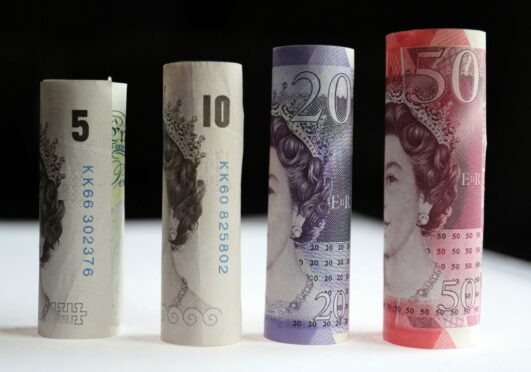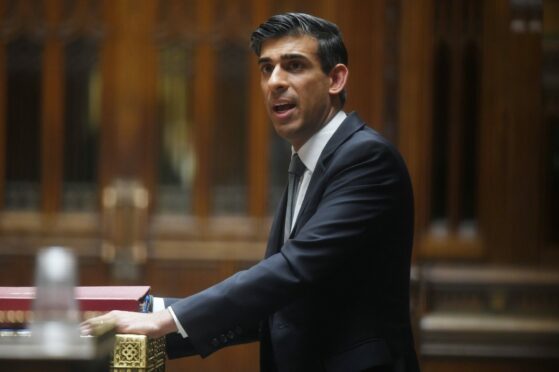The speed at which the economy grew in February slowed significantly compared with a month earlier as the impact of the cost-of-living crisis started to bite.
Gross domestic product (GDP) grew just 0.1% in February, compared with growth of 0.8% in January, the Office for National Statistics (ONS) said.
This was below an expected rise of 0.3% predicted by economists.
TUC general secretary Frances O’Grady said the slowdown was due to fears over the impact of rising costs of energy, food and prices.
“The cost of living crisis is putting the brakes on our recovery as households cut back their spending,” she said.
“The Chancellor must come back to parliament with an emergency budget to keep families out of hardship and to keep the economy moving.”
Growth was seen in the hospitality and leisure sectors as Omicron infection numbers eased compared to December and January.
But GDP was hit as Government spending on the NHS test and trace system and Covid-19 vaccination booster programme slowed in February.
There were also slowdowns in construction industries as business confidence took a knock, with the cost-of-living crisis and high energy bills leaving bosses uneasy about making significant investments.
Losing steam
Suren Thiru, head of economics at the British Chambers of Commerce (BCC), said: “While economic output continued to rebound in February, the significant slowdown in growth indicates that the UK economy was losing steam even before the impact of Russia’s invasion of Ukraine.
“Tourism-related industries and accommodation services recorded the strongest improvements in the month as the end of plan B restrictions, and reduced concerns over Omicron, supported activity.
“However, this was mostly offset by a significant drop in NHS Test and Trace services and vaccine activity as well as declines in industrial and construction output.
“February’s slowdown is likely to be the start of a prolonged period of considerably weaker growth as rising inflation, surging energy bills and higher taxes increasingly damages key drivers of UK output, including consumer spending and business investment.”
…but there was a boost due to holidays
The key driver of growth for the economy during the month of February came from the services sector – up 0.2% – with the ONS saying there were increases in travel agency, tour operator and other reservation services – up 33.1% on the month.
Accommodation and food services were up 8.6% in February, with healthy growth in hotel bookings as the Omicron variant faded and people tried to get away.
The biggest negative contributor in consumer-facing services was the motor industry with sales of cars and repairs down.
This also impacted car factories, which saw slowdowns, along with falls in the manufacturing of computers and other electronics – where chip shortages continue to bite.
Overall, the services are now 2.1% above pre-Covid levels with construction up 1.1%. But production is now 1.9% below pre-pandemic levels.
Alpesh Paleja, Confederation of British Industry (CBI) lead economist, said: “Following the bounce at the start of the year, it’s no surprise that economic growth slowed in February.
“Near-term challenges to the outlook have ramped up since, with a growing cost-of-living crunch set to weigh on growth.
“Businesses are also grappling with headwinds from the Ukraine conflict, which is exacerbating cost pressures and supply chain disruption.”
Chancellor Rishi Sunak said: “I welcome the positive growth seen across the economy in February, which continues to recover from the pandemic, boosted by the support we provided.
“Russia’s invasion of Ukraine is creating additional economic uncertainty here in the UK, but it is right that we are responding robustly against Putin’s unprovoked invasion.”
Gulf in trade deficit widens
Separately, the ONS released a new set of figures caused by a change in how HM Revenue and Customs measures exports to the EU.
While the new measure shows a 25.4% rise in goods exports to the EU in February compared to the month before, this was a decrease by 0.3% compared to December 2021 under the old system.
The ONS suggested the new month-on-month movements should not be relied on when interpreting the latest data for exports to the EU.
Exports to non-EU countries dropped 6.4% between January and February, the figures show.
The UK’s trade deficit widened by £10.2 billion to £54.4bn in the three months to February.


